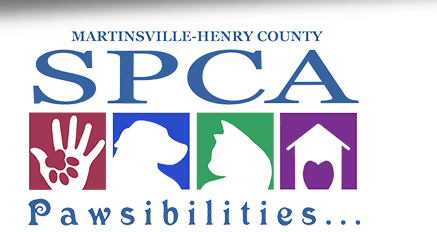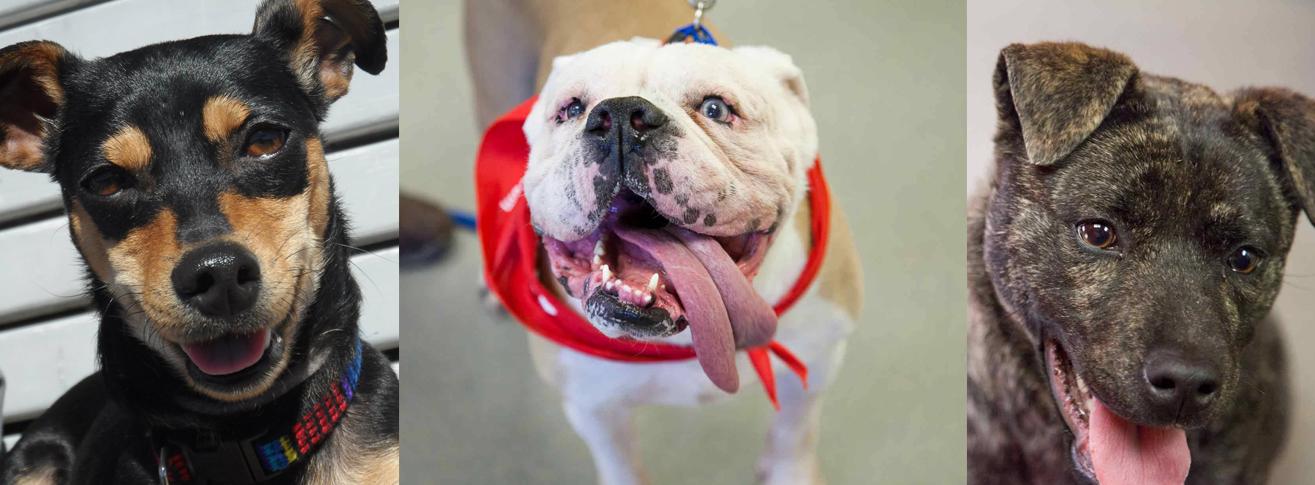Introducing Dogs to Each Other
By Sherry Woodard, Best Friends animal behavior consultant
If you have a dog and a new one will be entering or visiting your home, there are things you can do to ensure that the meeting comes off without a hitch. A new dog can mean you are bringing home a foster dog or a new puppy; someone who has a dog is moving into your house; or someone is visiting with a dog.
If you know that both dogs are very social with other dogs, the meeting should be easy. But, you may not know this, since some dogs don’t get out and mix with other dogs that much. If your dog (or the new dog) has not been spayed/neutered, the meeting may be more difficult.
If you are uncertain how one (or both) of the dogs will react, be cautious. First, the dogs will need to meet on neutral ground. Choose a place where neither dog is likely to feel territorial. Even your dog’s favorite park is not a good spot, unless it is a dog park (dogs are often used to meeting other dogs there). If you are adopting a dog from a shelter, ask the staff if they can help to introduce the dogs. If your dog is accustomed to meeting dogs at a pet supply store like PetSmart or Petco, you can ask their trainer to help with the introduction. The dogs could casually meet while you are on a shopping trip.
When the meeting occurs, have each dog on lead, each with a calm, relaxed adult handler. Keep the leads loose, since tension on the leash might communicate to the dog that you are fearful or anxious about their meeting. Walk the dogs side by side with a safe distance between the dogs. Then, cross paths (still maintaining that distance) and allow the dogs to smell where the other has walked.
Next, let the dogs meet. As the dogs approach each other, watch their body language closely, paying attention to the entire body. The dogs may need to do a little posturing or make a little noise, but if you don’t know how to tell the difference between dogs getting to know each other and dogs who don’t like each other, have someone there who does.
Do not allow nose-to-nose greetings. This type of greeting is very stressful for many dogs, particularly those who are fearful or feel threatened by eye contact. For these dogs, nose-to-nose greetings may cause them to make a bad decision and bite. When dogs first look into each other’s eyes, the appropriate behavior is to give a glance and then look away. A hard stare into another dog’s eyes is a challenge — not a friendly way to greet. If the dogs practice inappropriate behavior like stiffening, staring or threats, try to get the dogs to focus back on walking.
If they stiffen their bodies and stare into each other’s eyes with their hair up and their teeth bared, they probably aren’t going to become fast friends. If they lunge at each other and try to fight, separate them and don’t try further introductions without help from someone with experience in dog training and behavior. Some dogs cannot safely interact with other animals and therefore should be the only pet in the home. Most, however, can be taught to ignore other animals while out in public.
If the dogs try to play by pawing or play-bowing with their legs stretched out in front of them, they may want to be best buddies. Allow them to sniff each other, and give praise for a nice greeting. If you want, you can take them for a walk together, stopping occasionally to allow them to sniff and investigate each other.
If neither of the dogs is food aggressive, you can practice cues that they know and give treats as rewards. Giving treats can also serve to distract the dogs from focusing too much on each other.
If the dogs seem fine with each other, drive them home and settle in, but make sure you’ve put away your dog’s toys, bones and food bowls first, since these items may be sources of conflict. If you’re going to offer “high-value” items like Kongs or chews, it may be best to separate the dogs. Once the dogs are good friends, they may be more willing to chomp side by side on high-value items.
To introduce a puppy to a dog, use the same procedure as above. But, if the puppy is under four months old, both the dog and the puppy may need frequent breaks from each other. Some adult dogs will quickly lose patience with puppy energy. If the dog does not like the puppy, do not leave them alone together.
If you are not confident or comfortable at any point, please seek help from someone who is knowledgeable about dog behavior.

